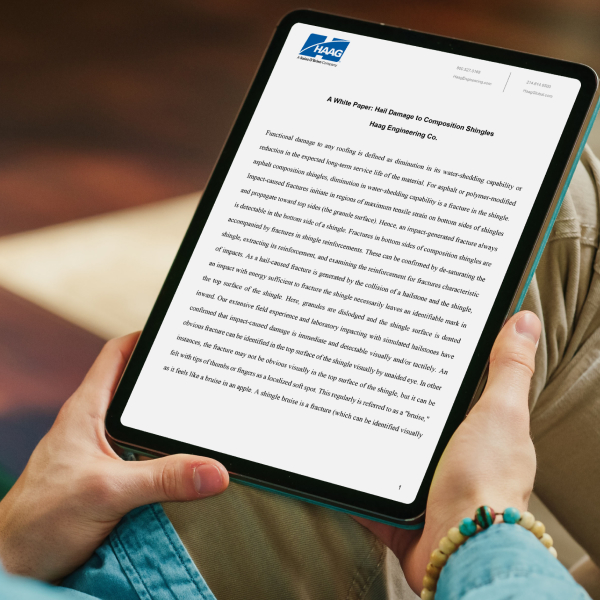Laboratory Testing of roofing samples
Steve Smith, P.E., Director of Research and Testing, Principal Engineer
Art is in the eye of the beholder. One person can look at a painting of an apple tree and clearly see the arc of human history portrayed from the deep roots to the solid trunk rising from the ground, to the fruits of technological advancement in the bright shiny apples hanging from the limbs. Another peers at the same painting and sees the sun and the earth working in harmony to produce life giving food for humanity. Someone else observes the magnificent artwork and sees a tree.
Although it may be entertaining to view artwork and try to determine the true meaning or purpose of the piece, you don’t want to hire a roof consultant only to receive an ambiguous report that relies on your own subjectivity to discern their conclusions. If you had only taken roofing samples and sent them to an accredited laboratory that specializes in providing the concrete answers you seek.
Haag Research & Testing is an accredited testing laboratory that specializes in analysis of roofing samples and can provide answers to the following questions.
- Was the condition on the sample related to hailstone impact?
- What size of hail can damage the sample?
- Does the damage extend through the sample or is just the coating damaged?
- What wind speed would it take to displace these roofing tiles?
- Did hail-caused dents in the insulation reduce the R-value?
- Does water leak through a particular feature in the sample?
Our laboratory performs various tests that Haag Engineers have relied on for decades either for developing information used in research papers or for giving specific information on active assignments. The Haag laboratory also performs tests for non-Haag consultants, adjusters, roofing contractors, public adjusters, and manufacturers. Brief descriptions of some of our more popular tests are provided below. You may also visit our website at HaagResearchTesting.com to learn more and to watch testing videos.
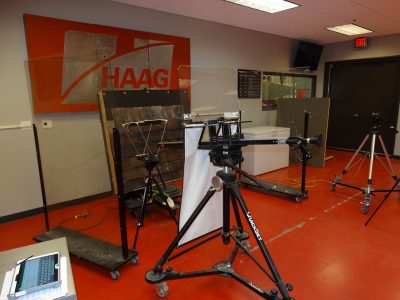
impact testing
Frozen solid ice balls are propelled at samples to simulate the effects of hailstone impacts. We use a wide range of ice ball sizes from 1/2 inch to 4 inches in diameter, which allows us to examine the effects of very small hail up to massive hail that can damage most roofing types. Test panels are constructed to replicate as-installed conditions and are typically impacted by simulated hailstones at 90-degree angles to replicate worst case conditions. We can vary the speed and angle of impact as needed. Learn more.
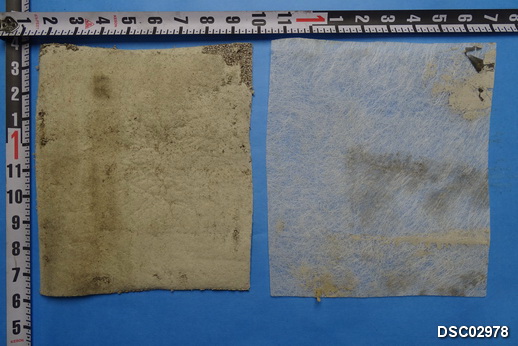
Desaturation Testing
Bituminous roofing products, including asphalt built-up roofing (ABUR), modified bitumen (mod-bit) roofing, and asphalt shingles are subjected to hot solvent that dissolved the asphalt, allowing the sample reinforcements to be examined for conditions related to impact-caused damage. Learn more.
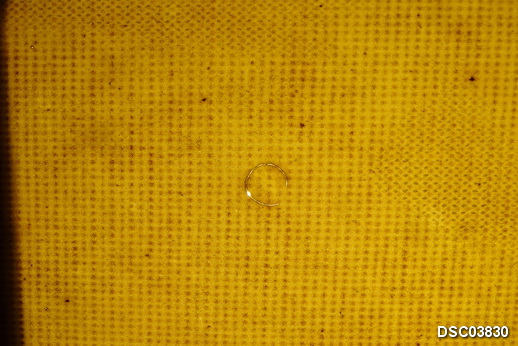
single-ply analysis
Single-ply roofing products, including polyvinyl-chloride (PVC), thermoplastic polyolefin (TPO), ethylene propylene diene terpolymer (EPDM), and others are examined visually, tactilely, microscopically, and using back-lighting techniques to determine if there are fractures in the membranes associated with impact forces. Learn more.
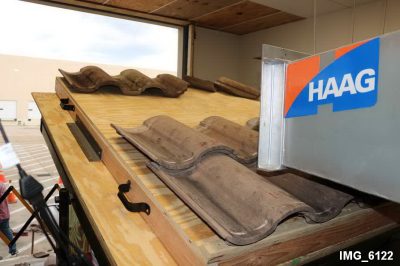
Wind Simulation
Test panels are constructed in a manner to simulate the as-installed conditions of roofs covered with shingles, tiles, shakes, slates, or synthetic products. Panels are set at a predetermined angle and wind is blown onto the panels to determine the approximate wind speed it takes to lift, displace, or otherwise damage the product. Various configurations can be evaluated to provide a wide range of possible scenarios. Learn more.
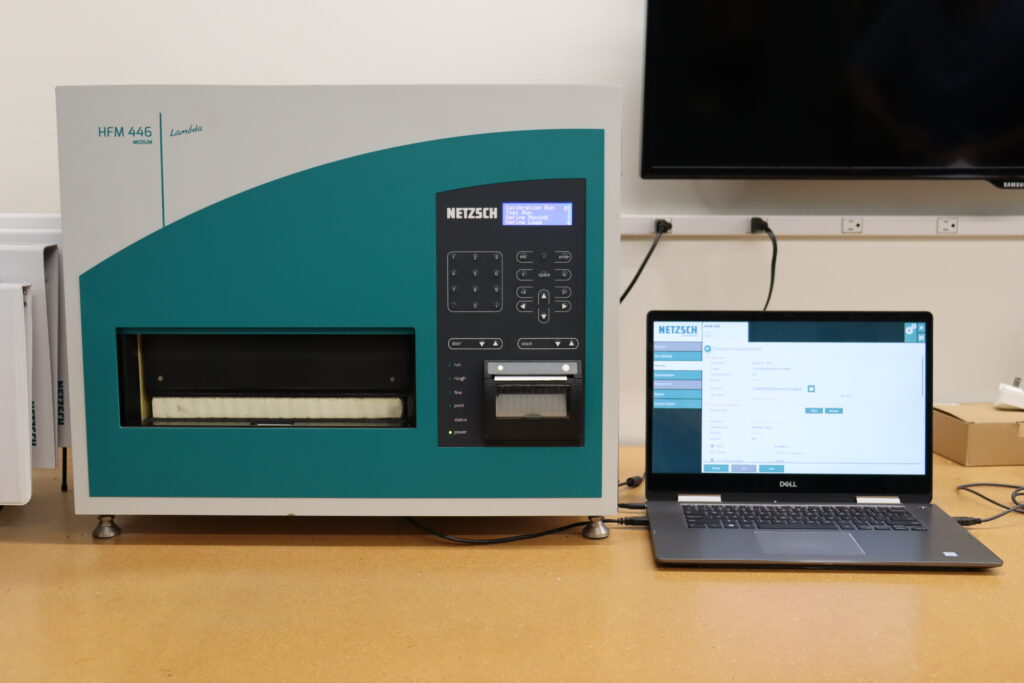
r-Value
The thermal resistance of insulation is measured, and comparisons made between samples with and without hail-caused dents to determine if hail-caused dents resulted in a measurable loss of R-value. Learn more.
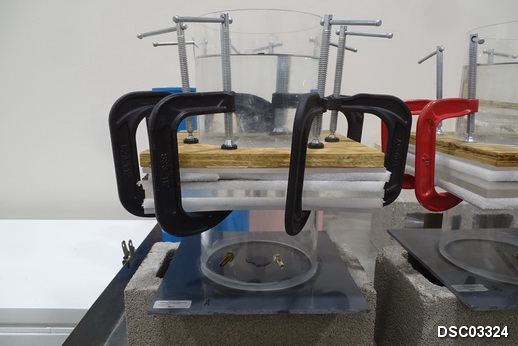
Water Column
Samples containing suspected impact-caused conditions, including displaced surfacing, dents, cracks, etc. are subjected to 6 inches of water and then monitored over a 7-day period. Air pressure cycles are conducted following the 7-day period (with the water still in place) to determine if the roofing sample will leak. Learn more.
Author

Steve Smith, P.E., Director of Research & Testing, Principal Engineer
Steven R. Smith is a Forensic Engineer with Haag Engineering Co., and the Director of Research & Testing. Mr. Smith is an experienced forensic engineer who began his career with Haag more than 24 years ago. He spent seven years working as a Senior Lab Technician while earning a Bachelor of Science in Mechanical Engineering degree from The University of Texas at Arlington. He has been involved with the lab throughout his career, and has been able to leverage his extensive and practical engineering field experience with research and testing projects.
Mr. Smiths areas of expertise include accident reconstruction, mechanical equipment evaluations, code and standards compliance, roofing system evaluations, and fires and explosions. He is a licensed Professional Engineer in Arkansas, Minnesota, Missouri, Oklahoma, Texas, and Wisconsin. He is a member of the American Society of Mechanical Engineers (ASME), Society of Automotive Engineers (SAE), and Pi Tau Sigma National Honor Society. Prior to joining Haag, Mr. Smith was a Petty Officer Second Class in the United States Navy. He trained at the Navy Nuclear Power Training Command Center in Orlando Florida and was stationed on the USS Arkansas (CGN-41), where he maintained reactor and steam plant chemistry, performed radiological controls, and operated mechanical equipment in the propulsion plant.
Any opinions expressed herein are those of the author(s) and do not necessarily reflect those of Haag Technical Services, Haag Engineering Co., Haag Education, or parent company, Haag Global, Inc.

